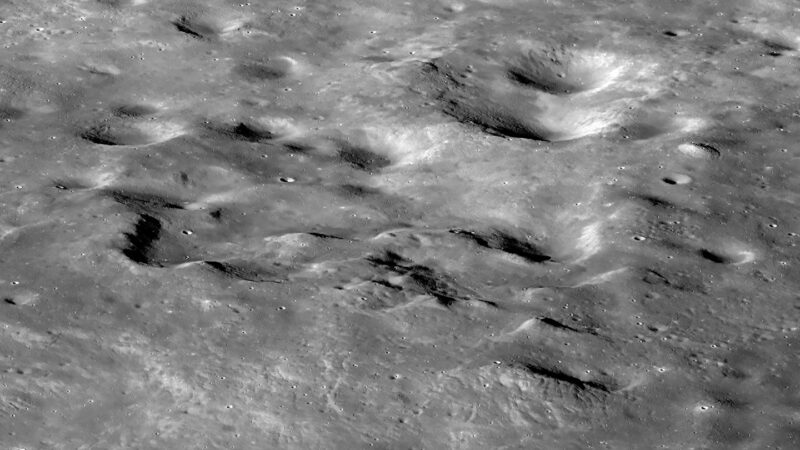Granite likely lurks beneath the moon’s surface

Watch out Yosemite — the moon has its own impressive rock display.
An enormous chunk of granite, measuring roughly 50 kilometers wide, may be buried beneath the lunar surface, researchers reported July 5 in Nature. Finding such a behemoth, by far the largest granite structure spotted beyond Earth, is a surprise given that forming this type of rock typically requires plate tectonics or abundant water.
When Apollo astronauts landed on the moon in the 1960s and 1970s, they encountered vistas dominated by basalt. The igneous rock is run-of-the-mill stuff on both the moon and our planet, says Matthew Siegler, a planetary scientist at the Planetary Science Institute in Tucson. “Everything starts as basalt.”
But over time, with enough heat and pressure, basalt can melt and morph into more durable granite. Plate tectonics and water, both mainstays on Earth, often help facilitate that transformation: Tectonic forces can help drag rocks down deep, where it’s hotter, and water, acting like a salt, helps rocks melt at lower temperatures (SN: 1/13/21).
Because the moon has no plate tectonics and very little water, finding copious amounts of granite there would be unexpected, Siegler says. Indeed, out of the roughly 380 kilograms of moon rocks (about the heft of a large bear) brought back to Earth by Apollo astronauts, just a handful of millimeter-sized pieces are granite (SN: 7/15/19). “That’s our whole inventory,” Siegler says.
But Siegler and his colleagues now have strong evidence that a massive piece of granite might be lurking under the moon’s surface. The team analyzed microwave data collected from the farside of the moon by China’s Chang’e-1 and Chang’e-2 lunar orbiters and discovered a geothermal hotspot roughly 9 degrees Celsius warmer than expected. Elevated temperatures are often an indicator of granite, Siegler says, because uranium and thorium — radioactive elements that decay over time and release heat — tend to aggregate within the rock.
To estimate how large a piece of granite could be lying beneath the region, known as the Compton-Belkovich Volcanic Complex, the researchers ran computer simulations of different sizes of granite buried at different depths. The team concluded that an ellipsoidal hunk of granite roughly 50 kilometers wide and 25 kilometers tall capped by a smaller ellipsoid of granite, all buried four kilometers below the lunar surface, best explained the Chang’e-1 and Chang’e-2 observations.
The big question is how such an edifice formed. One idea that Siegler and his colleagues propose is that a mantle plume — a column of molten rock — once persisted under the Compton-Belkovich Volcanic Complex. That plume would have turned some of the region’s basalt into granite.
On Earth, mantle plumes famously combine with tectonic plate movement to create island chains like Hawaii, Siegler says (SN: 9/19/11). But on the moon, where there is no plate tectonics, a mantle plume would just continuously heat one region, he says. “You get a single spot of the crust that keeps getting roasted.”
This is an intriguing discovery that should be followed up with a lunar mission, says Brad Jolliff, a planetary scientist at Washington University in St. Louis who was not involved with the new study. “It’s ripe for a robotic mission that has a small rover that can test some of these properties up close.”
In the next few years, scientists plan to do just that. NASA’s Lunar Vulkan Imaging and Spectroscopy Explorer mission, or Lunar-VISE, which is slated to launch by 2027, will land on the summit of one of the Gruithuisen domes. Located on the moon’s nearside, these volcanic features are believed to also contain granite. Lunar-VISE will be able to take a closeup look at the region’s chemical composition, says the mission’s principal investigator Kerri Donaldson Hanna, a planetary geologist at the University of Central Florida in Orlando.
That’s important because it’s often difficult to capture small details from orbit. Landers like Lunar-VISE can shed light on the moon’s geology, says Donaldson Hanna. “We need new observations.”
For all the latest Technology News Click Here
For the latest news and updates, follow us on Google News.
